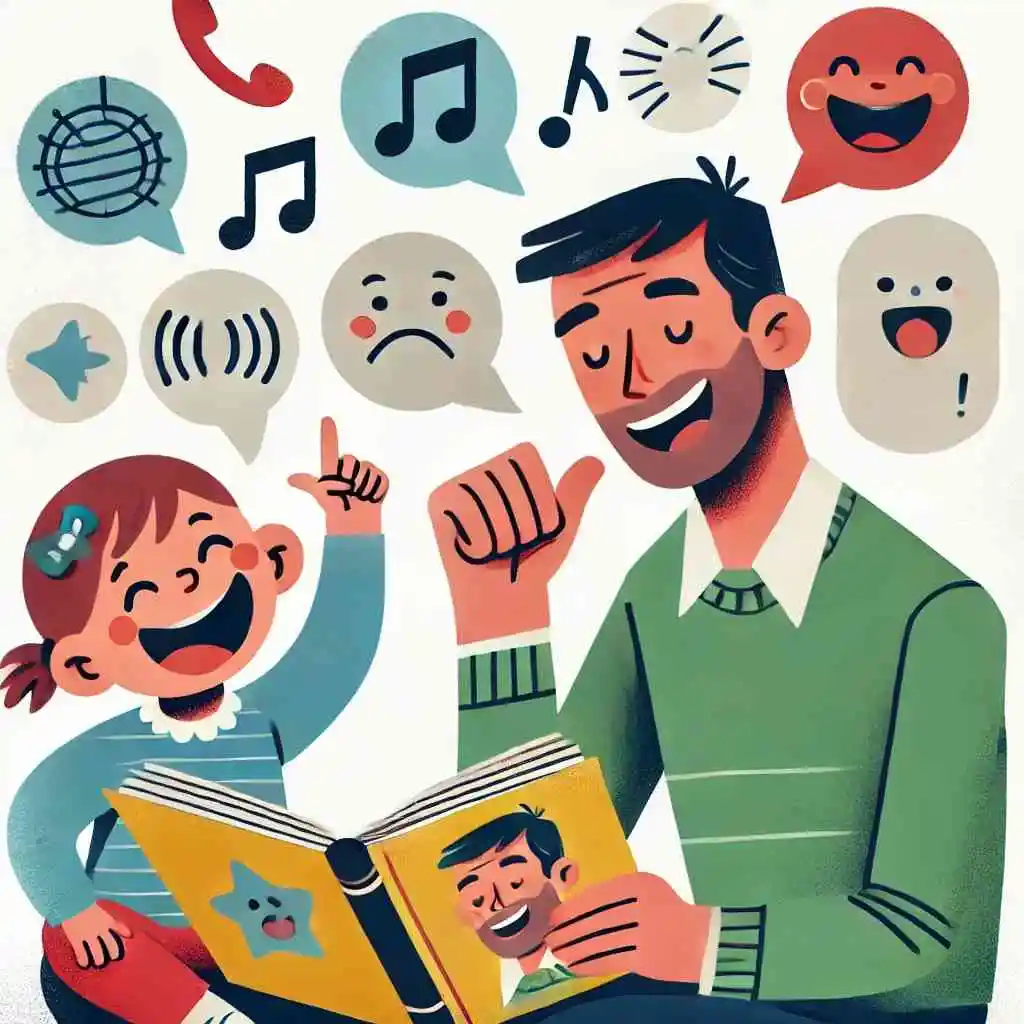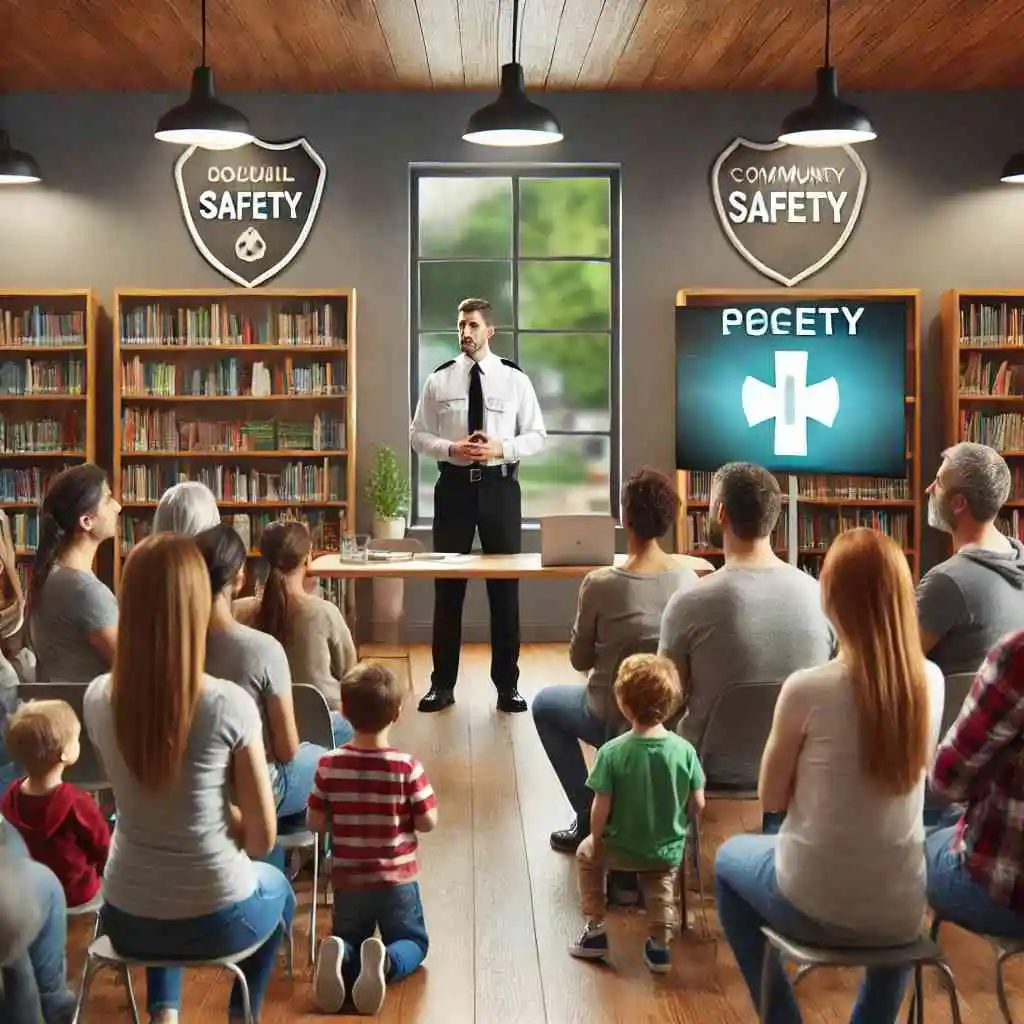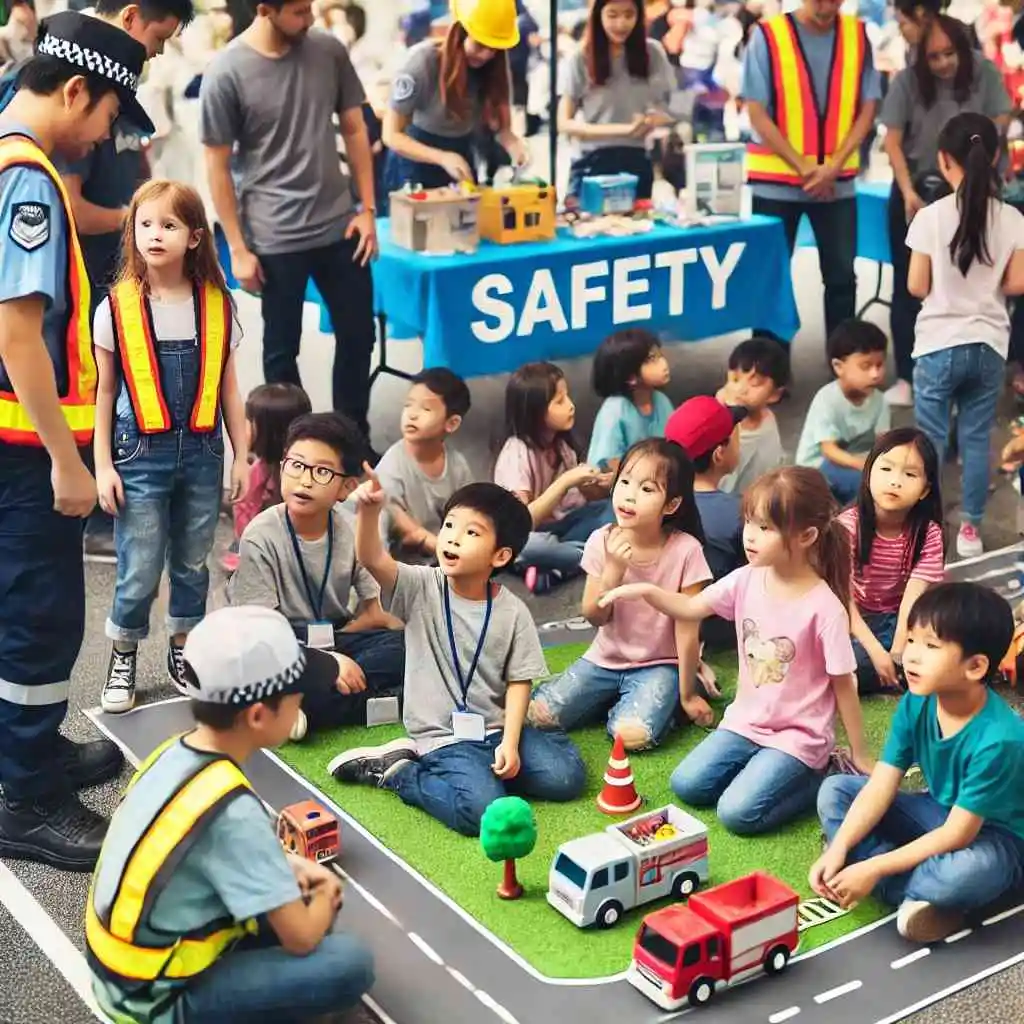Selecting the Right Books for Different Ages
When it comes to picking out the perfect book for your child, it can sometimes feel like navigating a maze. With so many options available, you might wonder where to start. Fear not! We’re here to help you find the best books tailored to your child’s age and interests. A good book can be a gateway to new adventures, learning, and growth. Let’s dive into some tips to help you choose the right ones for every age group.
Engaging Books for Ages 1-5
For the youngest readers, books are all about discovery and sensory engagement. At this age, kids love bright pictures, simple words, and interactive elements. Board books with sturdy pages are a great choice. They can withstand a bit of rough handling from tiny hands. Look for titles with rhymes and repetitive text. These features make stories fun and easier for little ones to follow along.
Picture books that incorporate touch-and-feel elements or flaps to lift can add an extra layer of excitement. Think of classics like “The Very Hungry Caterpillar” by Eric Carle or “Brown Bear, Brown Bear, What Do You See?” by Bill Martin Jr. and Eric Carle. These books are not only engaging but also help build early vocabulary and comprehension skills.
Another great idea is to choose books that feature familiar routines or activities. Stories about bedtime, mealtime, or potty training can be both comforting and educational. These books help children understand and relate to their everyday experiences, making the reading time more meaningful.
Captivating Reads for Ages 5-10

As kids grow, their ability to understand more complex narratives expands. For children in the 5-10 age group, seek out books that offer a mix of illustrations and text. This blend can help maintain their interest while supporting their developing reading skills. Chapter books with engaging plots and relatable characters are perfect for this age range.
Series like “Magic Tree House” by Mary Pope Osborne or “Junie B. Jones” by Barbara Park are excellent choices. These books offer exciting adventures and familiar characters, which can encourage kids to keep reading. The continuity of a series can create a sense of anticipation and excitement for the next book.
Additionally, this age is ideal for introducing kids to non-fiction books. Topics that align with their interests, such as animals, space, or dinosaurs, can make learning fun. Non-fiction books can provide valuable information in an engaging way, fostering a love of learning and curiosity about the world.
Exciting Adventures for Ages 10-15

For older children, ages 10-15, the world of books opens up even more. At this stage, readers are ready for more complex stories with deeper themes and character development. Young adult (YA) novels are a fantastic option, as they often tackle themes of identity, friendship, and overcoming challenges.
Series like “Harry Potter” by J.K. Rowling or “Percy Jackson” by Rick Riordan offer thrilling adventures that captivate young readers’ imaginations. These books not only entertain but also provide important life lessons and moral values through their characters’ journeys.
Encouraging children to explore different genres can also be beneficial. From fantasy and science fiction to historical fiction and mystery, exposing them to a variety of genres can help them discover their preferences. This variety keeps reading exciting and opens their minds to different storytelling styles and perspectives.
Choosing Books Based on Interests

No matter the age, one of the most effective ways to get children excited about reading is to choose books that align with their interests. Pay attention to what they love, whether it’s animals, sports, fairy tales, or science experiments. When kids see their favorite subjects reflected in books, they’re more likely to be enthusiastic about reading.
Take them to the library or bookstore and let them pick out books that catch their eye. This sense of autonomy can make them feel more invested in reading. Additionally, reading together and discussing the stories can enhance their understanding and make the experience more enjoyable.
Remember, the goal is to make reading a fun and rewarding experience. By selecting the right books for your child’s age and interests, you’re setting the stage for a lifelong love of reading. Happy reading!
Strategies for Interactive Reading Sessions

Reading with children can be a magical experience, especially when it’s interactive. By making reading sessions engaging and participatory, you can foster a love of books while teaching important life lessons. Here are some tried-and-true strategies to make your reading sessions with kids both fun and educational.
Involve Them in the Story
One of the best ways to make reading interactive is to involve children in the story. Ask them questions about what they think might happen next or how they feel about a character’s actions. You can say, “What do you think Cesar the Clever Cat will do next?” or “How do you think Guy the Guardian Gecko feels right now?” This encourages kids to think critically and engage with the story on a deeper level.
You can also invite them to act out parts of the story. If you’re reading a book where a character jumps over a puddle, encourage your child to jump like the character. These simple activities can make the story come to life and keep children engaged.
Use Voices and Sounds

Another fun way to make reading sessions interactive is by using different voices and sounds for each character. Children love it when you put on a deep, growly voice for a bear or a high-pitched squeak for a mouse. It adds a layer of excitement and can help them differentiate between characters.
Sound effects can also enhance the storytelling experience. If there’s a thunderstorm in the book, you can clap your hands or stomp your feet to mimic the sound of thunder. These small actions make the story more immersive and memorable for your child.
Encourage Predictive Thinking
Encouraging predictive thinking can be a great way to involve kids in the story. Before turning a page, ask them what they think will happen next. This not only makes them an active participant in the story but also develops their critical thinking skills.
You might say, “Do you think Guy the Guardian Gecko will find his way home?” or “What do you think Cesar the Clever Cat will do to solve this problem?” These questions prompt children to use their imagination and reasoning, making the reading session more interactive and intellectually stimulating.
Make Connections to Real Life
Helping children make connections between the story and their own lives can make reading more meaningful. For example, if a character in the book is dealing with a loss, you can gently talk about any similar experiences your child might have had. This helps them understand that the lessons from the story are relevant to their own lives.
You could say, “Remember when we lost our pet fish? How did we feel?” This can open up a conversation about emotions and coping mechanisms, making the story more relatable and impactful.
Incorporate Movement and Actions

Integrating movement and actions into your reading session can keep energetic children engaged. If a character is running, encourage your child to run in place. If a character is climbing a mountain, have them pretend to climb.
These physical activities not only make the story more fun but also help children burn off energy while focusing on the book. It’s a win-win situation that keeps their bodies and minds active.
Create a Reading Routine
Establishing a reading routine can make interactive reading a regular part of your child’s life. Pick a cozy spot in your home and make it your dedicated reading area. Set aside a specific time each day for reading together.
Consistency helps children know what to expect and look forward to their interactive reading sessions. It also provides a sense of security and routine, which is beneficial for their overall development.
Ask Open-Ended Questions
Asking open-ended questions during your reading sessions can stimulate your child’s thinking and imagination. Instead of yes or no questions, ask questions that require more elaborate answers.
For example, “Why do you think Cesar the Clever Cat made that choice?” or “What would you do if you were in Guy the Guardian Gecko’s situation?” These questions encourage children to think deeply and express their thoughts and feelings, enhancing their comprehension and analytical skills.
Use Props and Visual Aids
Props and visual aids can make the story more engaging and interactive. You can use toys, drawings, or even costumes to bring the story to life. If the book features a particular animal, you can show a toy version of that animal.
This visual element can help children better understand and visualize the story, making the reading session more enjoyable and memorable. It also caters to visual learners who benefit from seeing and touching objects related to the story.
Celebrate Reading Achievements

Celebrating reading achievements can motivate children to engage more during reading sessions. Set small goals, such as finishing a book or reading for a certain number of days in a row, and celebrate when those goals are met.
Rewards can be simple, like a sticker or an extra story at bedtime. Recognizing and celebrating their efforts and achievements can boost their confidence and enthusiasm for reading.
Interactive reading sessions are a fantastic way to connect with your child, make reading fun, and impart valuable lessons. By involving them in the story, using voices and sounds, encouraging predictive thinking, making real-life connections, incorporating movement, establishing a routine, asking open-ended questions, using props, and celebrating achievements, you can create memorable and educational reading experiences. Happy reading!
Encouraging Critical Thinking Through Stories
Introduction
Reading stories is a wonderful way to spark a child’s imagination. But did you know that stories can also boost critical thinking skills? By asking questions and encouraging discussions, you can turn storytime into a fun learning experience. In this blog post, we’ll explore how to use stories to encourage critical thinking in children. We’ll cover some practical tips, engaging activities, and share why it’s important for your child’s development.
Why Critical Thinking Matters

Critical thinking is essential for children because it helps them make sense of the world. When kids think critically, they learn to ask questions, solve problems, and make informed decisions. These skills are crucial not just for school, but for everyday life. Stories are a perfect tool for fostering these abilities because they present different scenarios and characters, prompting kids to think deeply and analyze.
Asking Open-Ended Questions
One of the easiest ways to encourage critical thinking is by asking open-ended questions. Instead of questions with a simple yes or no answer, ask questions that require more thought. For example, after reading a story, you could ask, “Why do you think the character made that choice?” or “What would you do in that situation?” These questions encourage kids to think about the story’s events and characters’ motivations.
Encourage your child to explain their reasoning. When they give an answer, ask follow-up questions like, “Can you tell me more about that?” or “What else do you think might happen?” This not only deepens their understanding but also helps them articulate their thoughts clearly.
Engaging in Predictive Thinking

Another great way to promote critical thinking is through predictive thinking. While reading a story, pause at key moments and ask your child what they think will happen next. This encourages them to use clues from the story and their own knowledge to make predictions. It’s a fun way to keep them engaged and thinking ahead.
You can turn this into a game by making it a family activity. Everyone can take turns predicting what happens next, and you can see whose predictions come closest to the actual story. This not only makes storytime more interactive but also fosters a love for reading and thinking critically.
Encouraging Alternative Endings

After finishing a story, ask your child to come up with an alternative ending. This activity challenges them to think creatively and critically about the story’s structure and characters. It helps them understand that stories can have multiple outcomes and that their own ideas are valuable.
Discuss the different endings your child comes up with and ask questions like, “How would that change the story?” or “What do you think the characters would do next?” This kind of discussion helps children see the story from different perspectives and deepens their critical thinking skills.
Connecting Stories to Real Life

Connecting the events and characters in stories to real-life situations can also enhance critical thinking. After reading a story, ask your child if they can think of a time when something similar happened to them. This helps them relate the story to their own experiences, making it more meaningful and encouraging them to think critically about both the story and their own lives.
You can also discuss real-life issues or lessons that relate to the story. For instance, if the story is about friendship, talk about what it means to be a good friend. Ask your child to share their thoughts and experiences, fostering a deeper understanding of the story’s themes and their own values.
Activities to Enhance Critical Thinking
Story Sequencing
A fun activity to enhance critical thinking is story sequencing. After reading a story, mix up the events and ask your child to put them back in the correct order. This activity helps them recall details and understand the logical flow of events. It’s a great way to reinforce the story and boost their analytical skills.
Character Analysis
Character analysis is another engaging activity. Ask your child to pick a character from the story and describe their traits, motivations, and actions. Questions like, “What do you like or dislike about this character?” or “How did this character change throughout the story?” encourage deeper thinking and help children understand complex personalities and behaviors.
Drawing and Writing

Encourage your child to draw or write about the story. They can draw their favorite scene or write a diary entry from a character’s perspective. This creative expression helps them process and analyze the story in a fun and meaningful way. It also allows them to explore their own interpretations and ideas.
Discussion and Debate
Finally, having discussions and debates about stories can significantly enhance critical thinking. Encourage your child to express their opinions and listen to others. Ask them to defend their viewpoints and consider different perspectives. This not only improves their critical thinking but also their communication skills.
Conclusion
Encouraging critical thinking through stories is a wonderful way to engage your child and help them develop essential skills. By asking open-ended questions, engaging in predictive thinking, encouraging alternative endings, and connecting stories to real life, you can turn storytime into a rich learning experience. Activities like story sequencing, character analysis, drawing, writing, and discussions further enhance their critical thinking abilities.
Remember, the goal is to make learning fun and meaningful. So, grab a book, snuggle up, and embark on a journey of discovery and critical thinking with your child. Happy reading!
Building a Supportive Community Network

When it comes to fostering awareness and understanding among children, building a supportive community network can make a significant difference. A community that works together can create a nurturing environment where children feel safe, heard, and valued. You might be wondering, how do you start building this kind of community? It’s simpler than you think, and it begins with small, intentional steps.
1. Start with Your Neighborhood
Your immediate community is the perfect place to start. Begin by getting to know your neighbors. Introduce yourself and your family, and express your interest in creating a supportive network for the children in your area. Organize a casual get-together, like a barbecue or a picnic, where families can meet and bond. During these gatherings, discuss the importance of safety and awareness for kids. Share ideas on how to integrate these values into daily life and support each other in this endeavor.
You can also start a neighborhood watch or a safety club. These groups can meet regularly to discuss any concerns and plan activities that promote safety and awareness. Encourage participation from both parents and children. By involving kids, you not only teach them valuable lessons but also give them a sense of responsibility and belonging within their community.
2. Utilize Local Resources
Don’t forget about the resources available in your local area. Libraries, community centers, and schools often have programs and events that can help you build a supportive network. Attend these events and use them as opportunities to connect with other parents and caregivers who share your goals.
Libraries, for example, frequently host storytime sessions. These can be a great way to introduce children to new concepts and values through books. Suggest including stories that emphasize safety, kindness, and community. Community centers might offer workshops or classes on various topics, from parenting to first aid. Attend these classes and encourage others to join you. The more people who participate, the stronger your network will become.
Schools are another fantastic resource. Speak with teachers and administrators about your desire to build a supportive community network. They might be willing to incorporate your ideas into their curriculum or help organize events. School events like fairs, open houses, and parent-teacher meetings can also serve as platforms for spreading awareness and gathering support.
3. Engage on Social Media
In today’s digital age, social media is a powerful tool for building and maintaining community networks. Create a Facebook group or a WhatsApp chat for parents in your neighborhood or school district. Use these platforms to share information, organize events, and provide support. You can post articles, videos, and resources related to child safety and awareness. Encourage group members to share their own experiences and tips.
Social media also allows you to reach a broader audience. Join larger groups and forums focused on parenting and child safety. These platforms can provide valuable insights and ideas that you can bring back to your local network. Remember to keep the tone positive and supportive. The goal is to create a space where everyone feels comfortable sharing and learning.
4. Organize Community Events

Community events are an excellent way to bring people together and reinforce the values of safety and awareness. Consider organizing events like safety fairs, where local authorities and organizations can provide information and demonstrations on various safety topics. You could also plan fun activities like scavenger hunts or obstacle courses that incorporate safety lessons.
Workshops and seminars are another option. Invite experts to speak on topics like internet safety, bullying prevention, and emergency preparedness. These events can be educational for both children and adults. Make sure to include interactive elements to keep the kids engaged. Hands-on activities and demonstrations are often more effective than lectures.
Don’t forget to celebrate your community’s achievements. Recognize the efforts of individuals and groups who contribute to building a supportive network. This could be through awards, certificates, or simple public acknowledgments. Celebrating successes can motivate others to get involved and continue the good work.
5. Foster a Culture of Support
Building a supportive community network is not just about organizing events and activities; it’s about fostering a culture of support and inclusiveness. Encourage open communication and active participation from all community members. Create an environment where everyone feels valued and heard.
One way to foster this culture is by leading by example. Show kindness, respect, and empathy in your interactions. Be approachable and willing to listen. When conflicts arise, address them calmly and constructively. Encourage others to do the same. By modeling these behaviors, you set the standard for your community.
Another important aspect is to recognize and celebrate diversity. Every family and child is unique, with their own experiences and perspectives. Embrace these differences and use them to enrich your community. Encourage the sharing of different cultures, traditions, and ideas. This not only broadens everyone’s horizons but also creates a sense of unity and belonging.
6. Continuous Improvement

Building a supportive community network is an ongoing process. It’s important to continuously evaluate and improve your efforts. Seek feedback from community members and be open to new ideas. What worked well? What could be improved? Use this feedback to make adjustments and plan future activities.
Stay informed about new trends and best practices in child safety and awareness. Attend conferences, read books and articles, and participate in online forums. Bring back what you learn to your community. The more informed you are, the better equipped you’ll be to support and educate others.
In conclusion, building a supportive community network is a rewarding endeavor that benefits everyone involved. It creates a safer, more connected environment for children to grow and thrive. By starting small and working together, you can make a big difference. So, take that first step today and start building your community network. You’ll be amazed at the positive impact it can have.


